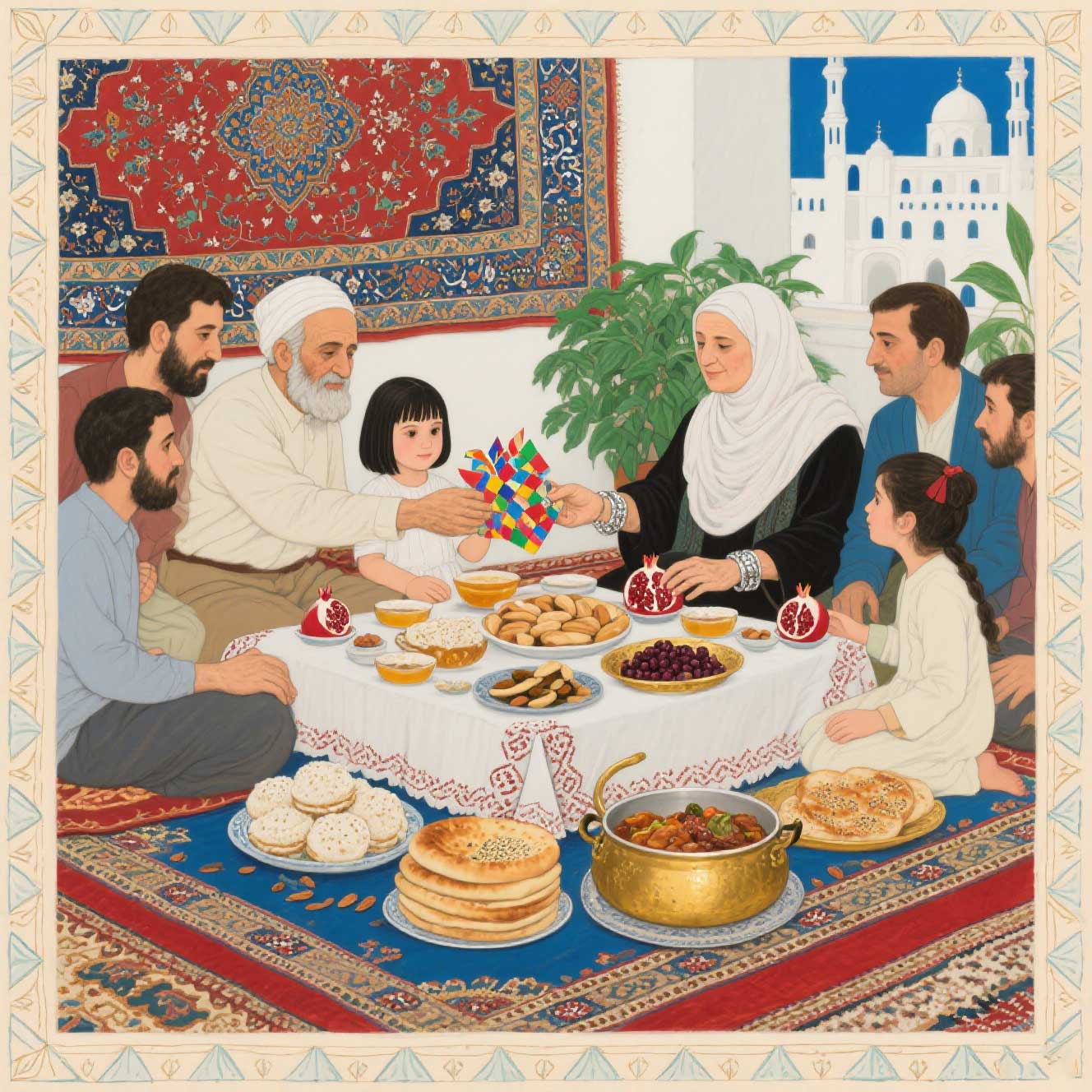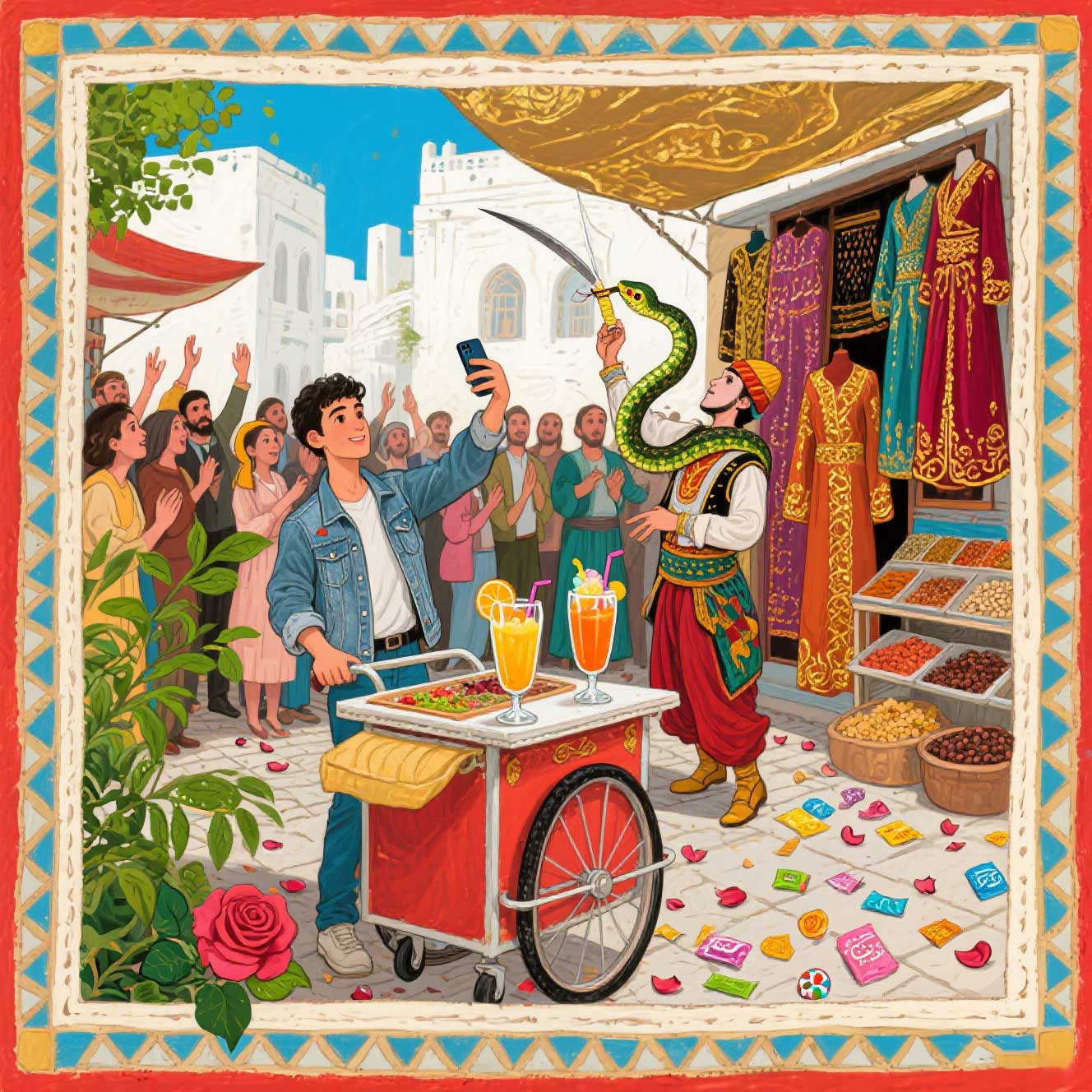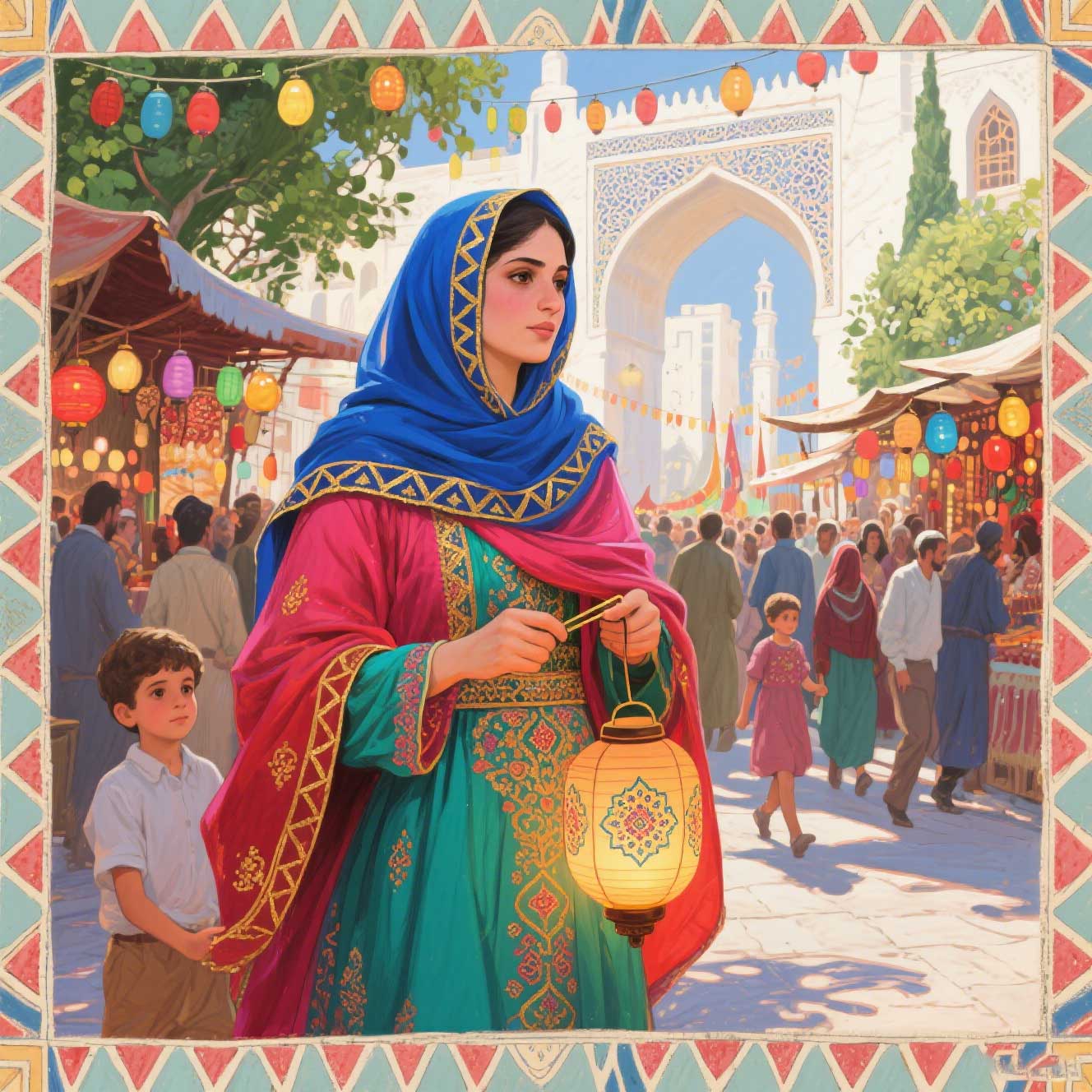+86-13516938893
Menu
global purchase
Festivals in Iran are like a colored thread steeped in millennia of civilization—one end tied to devout reverence for faith, the other linked to grateful awe for nature, and in between, wrapped in the warm breath of everyday life. They are not isolated rituals, but cultural bonds that tightly stitch together religious doctrines, the cycles of the seasons, and human warmth. Each festival is like a gem polished by time, reflecting Iranians' profound understanding of life, faith, and existence. Among them, the joyous Eid al-Fitr, the solemn Ashura, and the vibrant Mehregan vividly embody this unique cultural charm to the fullest.

Eid al-Fitr is the grandest "reunion ritual" bestowed by Islam upon Iranians. Like a beam of warm light, it illuminates the thirty days of restraint and devotion during Ramadan. A week before the festival, Iran's streets and alleys are already dyed with the hues of joy: Housewives kneel on carpets, carefully wiping every tile with rags dipped in rose water, so that when sunlight filters through window panes, it casts bright spots on the floor; Markets are crowded with shoppers—clerks in silk stores eagerly display new clothes trimmed with gold thread, while the mixed aroma of saffron and cinnamon wafts from earthen jars in spice shops. Even the air carries the scent of "preparing to welcome joy."

Kitchens in every household buzz with activity well in advance. Hostesses mix almonds, walnuts, raisins, and honey to make "Halim" (a sweet, soft dessert), while the ovens for baking flatbreads fill the air with the aroma of sesame flatbreads and whole-wheat flatbreads in turn. Stew pots simmer on stoves, as the flavors of lamb, tomatoes, and onions slowly seep into every fiber, waiting to awaken the family's taste buds on the festival day.
The dawn of the festival always arrives with extraordinary solemnity. Before daybreak, the call to prayer from mosques pierces the night sky. People dressed in new clothes, holding prayer beads, walk along dew-drenched paths toward the mosques. Men wear neat suits or traditional robes, while women's headscarves complement their new outfits—pinks, blues, and greens interweaving into a flowing tapestry of colors in the morning light. During the prayer service, hundreds of people kneel neatly on carpets, listening to the imam deliver teachings in a deep, resonant voice, his words filled with "gratitude" and "tolerance." Sunlight filters through the colored glass of the mosques, casting tiny, fragmented light spots on the hems of people's clothes, blending solemnity with tenderness.

After the prayer, the celebration officially begins. People walk from house to house with gift boxes and smiles, knocking on the doors of relatives and friends. The first greeting is always "Eid Mubarak" (Blessed Eid). Elders tuck "Eid envelopes" (red envelopes with money) wrapped in colored paper into the hands of younger generations. Children, upon receiving the envelopes, skip joyfully to the streets, weaving through crowds with lanterns painted with Persian patterns. The candlelight inside the lanterns flickers, complementing the colored lights hanging in front of every household. In the markets, acrobats' performances draw cheers, while vendors push carts loaded with fruit sherbet, the clink of glass cups ringing out clearly. In parks, families spread carpets and sit together, sharing the Halim and flatbreads they brought. Elders tell stories about Ramadan to children, while young people use their phones to capture these lively moments. The entire country of Iran seems to be wrapped in a "web of joy"—the aroma of food, people's laughter, and children's playful shouts interweaving into a joyous anthem of reunion.